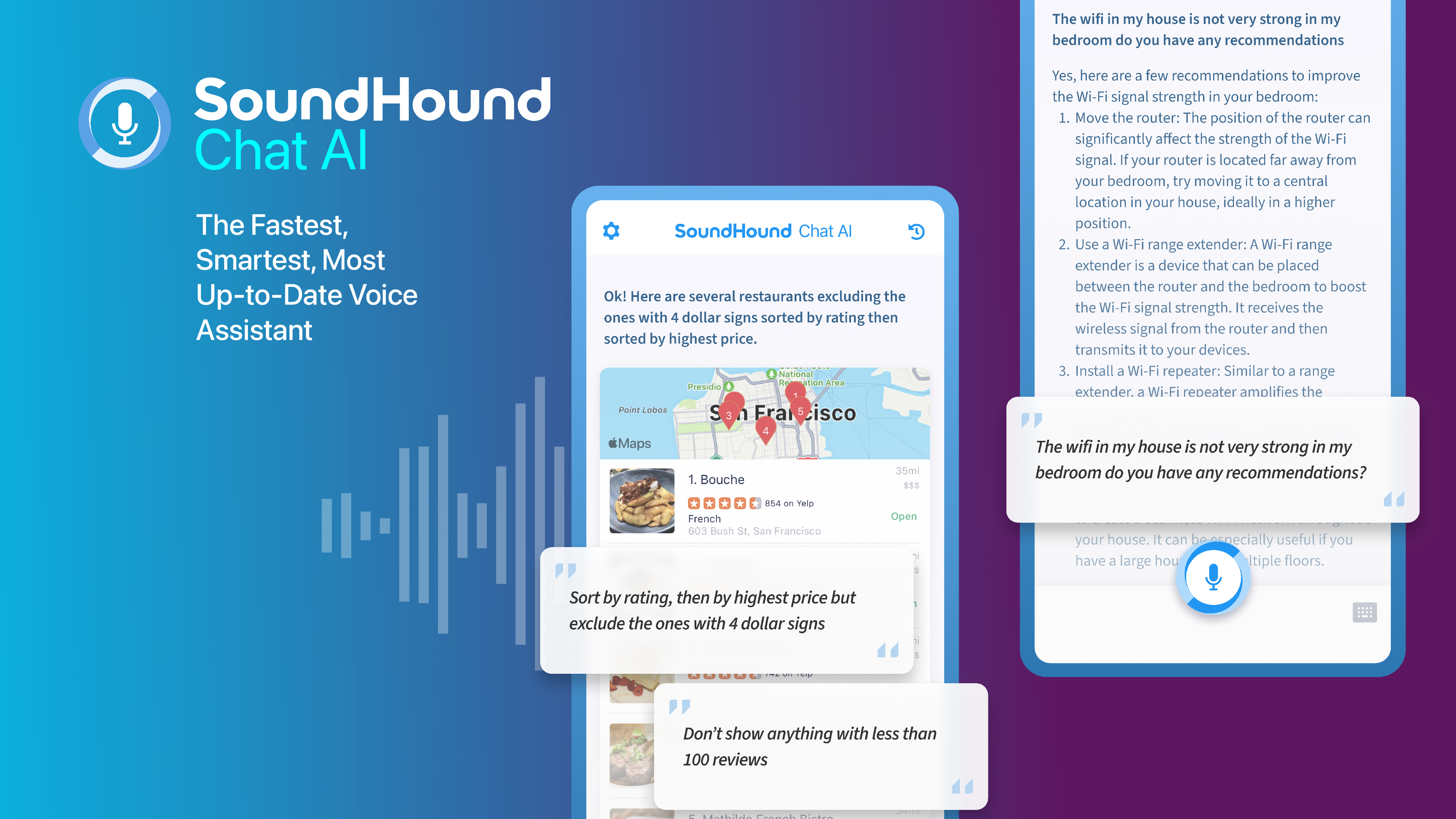
SoundHound: Complete Buyer's Guide
Independent voice AI platform enabling branded voice commerce with proprietary speech processing and revenue-sharing capabilities for transaction-heavy businesses.
SoundHound AI (Nasdaq: SOUN) operates as a specialized voice AI platform provider with proprietary Speech-to-Meaning® and Deep Meaning Understanding® technologies that bypass traditional speech-to-text conversion for direct speech processing[51][65][70]. Founded in 2005 and publicly traded since 2022, the company has established significant market presence in automotive, hospitality, and restaurant sectors, processing over 100 million restaurant interactions annually[45][70].
Market Position & Maturity
Market Standing
SoundHound occupies a specialized market position between platform giants (Amazon Alexa, Google Assistant) and vertical-specific solutions, with public trading status (Nasdaq: SOUN) since 2022 providing transparency and financial stability indicators[51].
Company Maturity
The company's 17-year operational history since 2005 demonstrates market longevity and technical maturity in voice AI development[51].
Growth Trajectory
Restaurant sector expansion with nationwide rollouts including Chipotle's deployment across all locations demonstrates scalability and operational maturity[45].
Industry Recognition
The company's automotive partnerships with Honda and Mercedes-Benz demonstrate technical validation in complex integration scenarios requiring multi-year development cycles[49].
Strategic Partnerships
Deutsche Telekom's multi-month integration for Moto devices and Pandora's music service integration demonstrate platform flexibility and enterprise partnership capabilities[53][59].
Longevity Assessment
SoundHound represents a mature voice AI platform with proven enterprise deployment capability, though generative AI capabilities lag behind newer market entrants with ChatGPT integration still in beta development[50][71].
Proof of Capabilities
Customer Evidence
SoundHound demonstrates proven enterprise-scale deployment capability through implementations with Chipotle, Jersey Mike's, Honda, Mercedes-Benz, and Deutsche Telekom[45][49][53][59].
Quantified Outcomes
SoundHound demonstrates proven capability through restaurant partners processing 'hundreds of millions of dollars' in orders via Smart Ordering system[45][70].
Case Study Analysis
Honda's contextual commerce conversations enabling restaurant discovery with specific criteria followed by refinement queries demonstrate sophisticated ecommerce-applicable capabilities[49][65].
Market Validation
The platform's 100+ million annual restaurant interactions and 10,000+ location deployments demonstrate operational scale and market validation in transaction-heavy environments[45][70].
Competitive Wins
SoundHound's custom wake word capabilities (such as 'Hello Moto') enable brands to replace platform-dependent solutions while maintaining voice commerce functionality[59][61].
Reference Customers
Enterprise customer relationships with Chipotle, Honda, Mercedes-Benz, Deutsche Telekom, and Pandora indicate strong market positioning among Fortune 500 organizations[45][49][53][59].
AI Technology
SoundHound's core technological differentiation centers on proprietary Speech-to-Meaning® technology that bypasses traditional speech-to-text conversion, enabling one-step speech processing for reduced response latency and improved accuracy for complex queries[65][70].
Architecture
The platform's Deep Meaning Understanding® technology enables contextual conversation capabilities demonstrated in Honda's automotive implementations[49][65].
Primary Competitors
SoundHound competes directly with Amazon Alexa and Google Assistant for voice commerce implementations[58][61].
Competitive Advantages
Proprietary Speech-to-Meaning® technology provides differentiation from speech-to-text dependent solutions, enabling one-step processing for reduced latency[65][70].
Market Positioning
SoundHound's market position emphasizes brand independence and data ownership alternatives to major platform ecosystems[58][61].
Win/Loss Scenarios
Organizations should choose SoundHound when brand control and data ownership outweigh ecosystem integration benefits, high transaction frequency characterizes business model, and technical resources exist for custom implementation[58][61][65].
Key Features

Pros & Cons
Use Cases
Featured In Articles
Comprehensive analysis of Voice Commerce for Ecommerce for Ecommerce businesses and online retailers. Expert evaluation of features, pricing, and implementation.
How We Researched This Guide
About This Guide: This comprehensive analysis is based on extensive competitive intelligence and real-world implementation data from leading AI vendors. StayModern updates this guide quarterly to reflect market developments and vendor performance changes.
74+ verified sources per analysis including official documentation, customer reviews, analyst reports, and industry publications.
- • Vendor documentation & whitepapers
- • Customer testimonials & case studies
- • Third-party analyst assessments
- • Industry benchmarking reports
Standardized assessment framework across 8 key dimensions for objective comparison.
- • Technology capabilities & architecture
- • Market position & customer evidence
- • Implementation experience & support
- • Pricing value & competitive position
Research is refreshed every 90 days to capture market changes and new vendor capabilities.
- • New product releases & features
- • Market positioning changes
- • Customer feedback integration
- • Competitive landscape shifts
Every claim is source-linked with direct citations to original materials for verification.
- • Clickable citation links
- • Original source attribution
- • Date stamps for currency
- • Quality score validation
Analysis follows systematic research protocols with consistent evaluation frameworks.
- • Standardized assessment criteria
- • Multi-source verification process
- • Consistent evaluation methodology
- • Quality assurance protocols
Buyer-focused analysis with transparent methodology and factual accuracy commitment.
- • Objective comparative analysis
- • Transparent research methodology
- • Factual accuracy commitment
- • Continuous quality improvement
Quality Commitment: If you find any inaccuracies in our analysis on this page, please contact us at research@staymodern.ai. We're committed to maintaining the highest standards of research integrity and will investigate and correct any issues promptly.